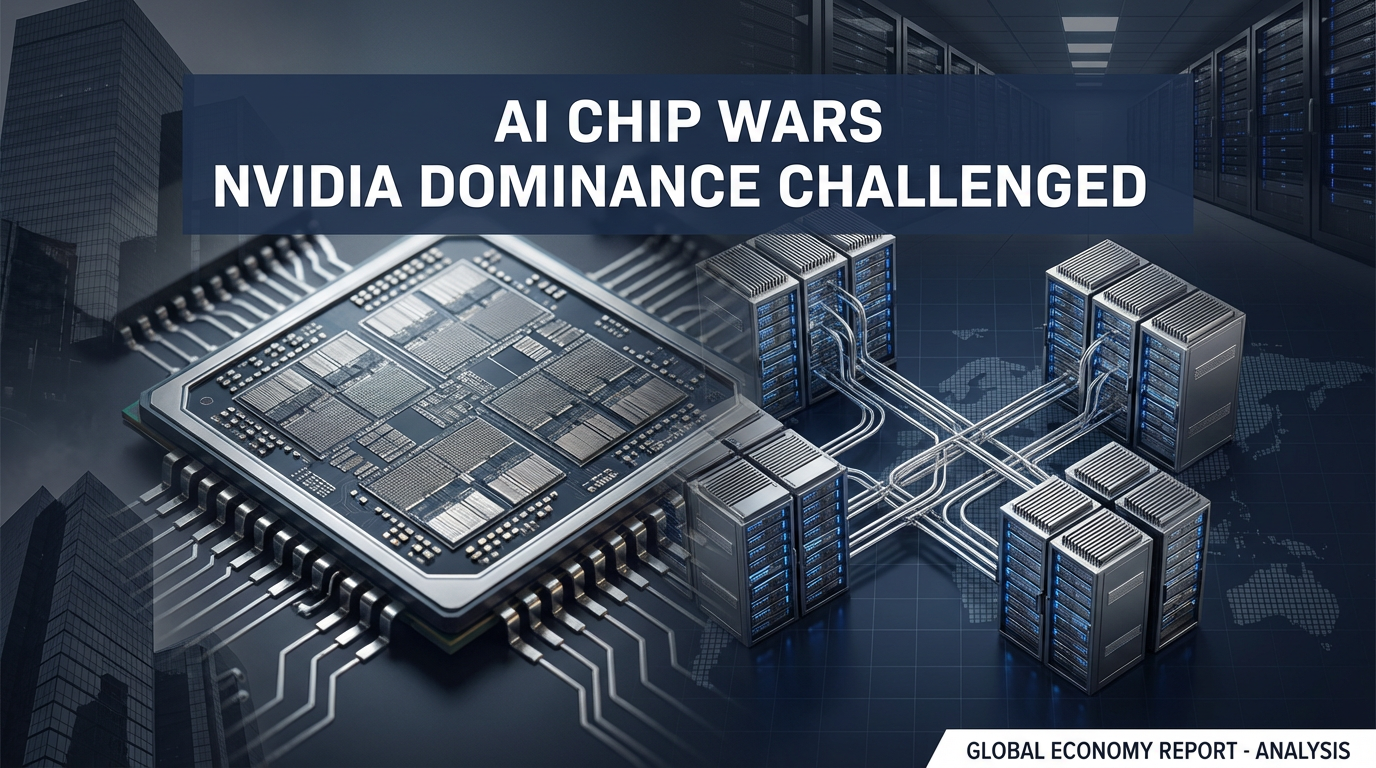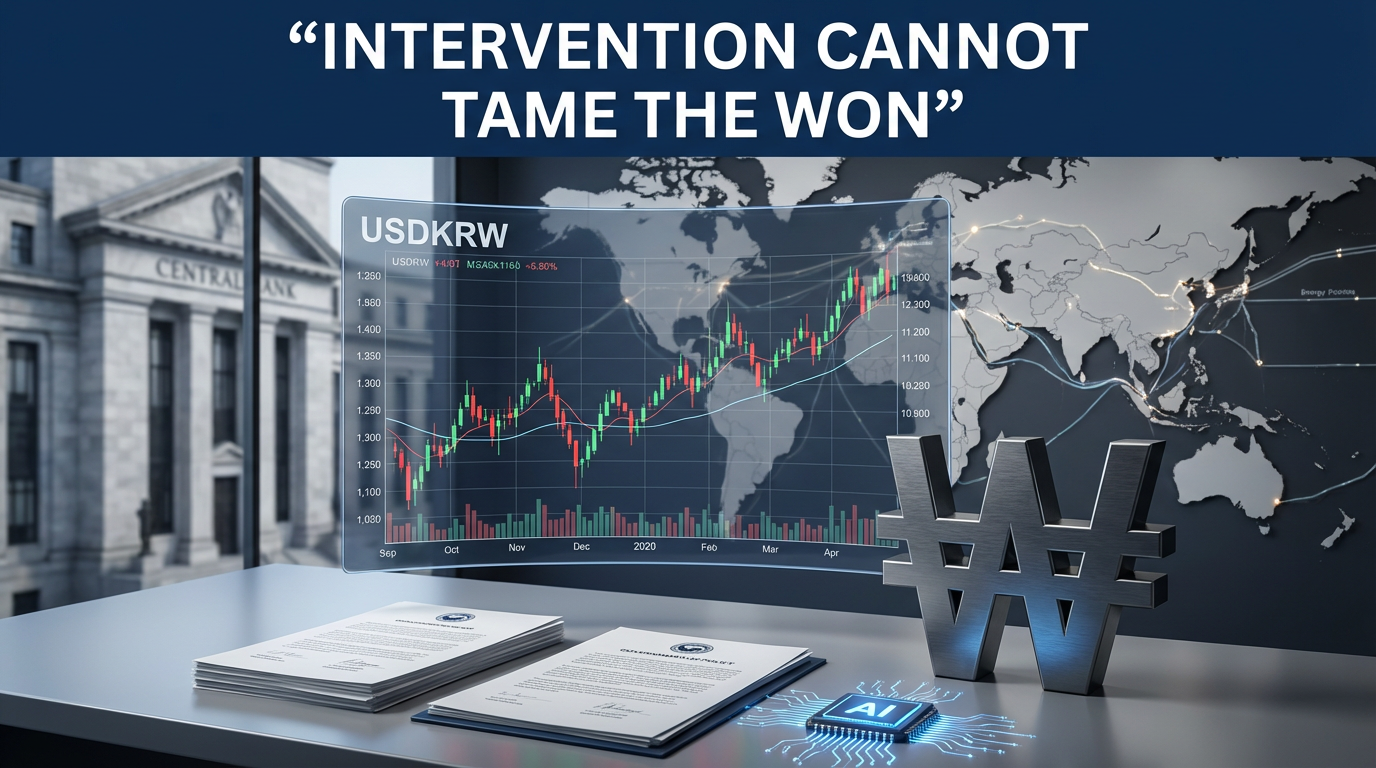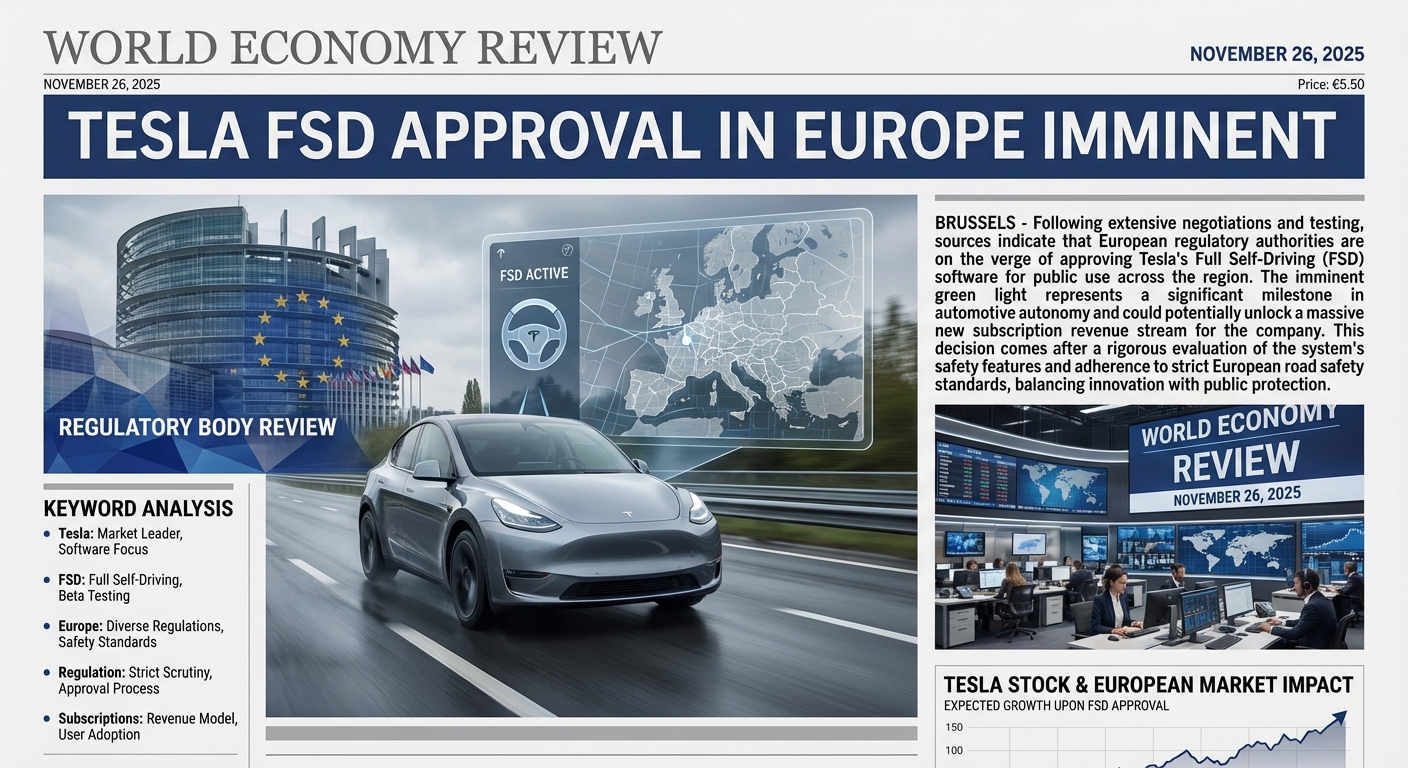● Nvidia’s Dominance Shaken, TPU’s Game-Changer Impact, Big Tech’s Chip Wars
Turning Point in the Competition Between NVIDIA and TPU – Key Insights into the Global Economy, AI Trends, Data Centers, Artificial Intelligence, and Technological Innovation
Market Shock and Big Tech’s Chip Strategy
This article examines how NVIDIA’s monopolistic position is being challenged in the big tech market along with sharp remarks from TPU designers.
Starting with the incident where NVIDIA’s stock fell as much as 7% during trading due to news related to Meta and Google on the New York Stock Exchange, we delve into the details of this issue.
In the market, voices are growing to clarify the misunderstandings and truths about the flow of the AI chip triad, along with the statement, “The market knows nothing.”
Amid the rapidly changing global economy, major big tech companies—Meta, AWS, Tesla, etc.—are attempting to develop their own chips, thereby creating a competitive landscape against NVIDIA.
Data Center and Connectivity Technology Competition
Recent Total Cost of Ownership (TCO) analysis shows that NVIDIA’s chips boast overwhelming performance and cost-effectiveness, highlighting the gap with competing products.
Compared to Google’s TPU, NVIDIA chips demonstrate advantages in key specs such as computational performance, memory capacity, and bandwidth.
In particular, when comparing AI computational performance and efficiency in relation to unit sales, NVIDIA chips are found to be more efficient, largely due to the roles played by data center interconnection technologies (NVLink, InfiniBand, Ethernet, XGS).
This is why big tech companies are continuously pursuing R&D and diversifying their supply chains to break away from NVIDIA’s dominant 90% market share.
Investment Strategy and Economic Indicator Analysis
At this point, NVIDIA’s stock fluctuations are providing investors with both confusion and opportunity.
While Google adopts a strategy of introducing TPU with a 0% margin, NVIDIA maintains high margins, resulting in each company’s growth rates and valuation metrics having a significant impact on investment strategies.
Data indicates that NVIDIA continuously achieves improvements in performance and energy efficiency in the AI chip market, suggesting high potential for growth in the long run.
Additionally, recent signals of economic slowdown in the U.S. and the possibility of interest rate reductions are important variables influencing investment decisions.
Key Insights and Reader Know-How
The most important points from this analysis are as follows.
① The remarks from the TPU designer clearly reveal the misunderstandings and differences in expectations within the market.
② The self-chip development competition among big tech companies is challenging NVIDIA’s 90% monopoly, which likely increases technological innovation in the long run.
③ The importance of data center technologies and interconnectivity technologies is being highlighted, and NVIDIA’s overwhelming performance remains a considerable strength.
④ The differences in cost-effectiveness and computational performance revealed in comparisons with competitors like Google and AMD are key considerations when forecasting the future of the AI trend market.
⑤ Macroeconomic indicators and the possibility of interest rate reductions are important factors in formulating short-term investment strategies.
[Related articles…]TPU Innovation Trends | Market Changes in NVIDIA
*Source: [ 월텍남 – 월스트리트 테크남 ]
– TPU설계 담당자의 일침…엔비디아 이대로 붕괴하나?
● China’s AI Power Play, Korea’s Talent Grab
Economic Ripple Effects of Major Global AI Cooperation Discussions and China’s Talent Acquisition
This article provides detailed information on the latest news reflected by important keywords such as global economy, AI trends, economic outlook, talent exchange, and global AI. It deeply analyzes China’s AI order and the economic and industrial advantages that South Korea can gain through attracting and cooperating with Chinese AI talent, focusing on key points not covered by other media.
[1] China’s AI Strategy and Global AI Cooperation Framework
China is showing a trajectory to expand its global leadership by establishing its own governance body in the AI sector. In an era where technological innovation is rapidly advancing, China aims to build an AI ecosystem through comprehensive investment in hardware, software, and application sectors. Notably, its strategy to create competitive advantages different from the U.S. monopoly system by introducing open-source models and self-sufficient standards is worth paying attention to. These movements will significantly impact the global economy and AI trends, prompting global discussions about economic outlook and technological advances.
[2] The Necessity of Talent Exchange Between Korea and China and Its Economic Impact
According to a white paper presented by a professor from Hanyang University, South Korea needs to strengthen talent exchange by attracting Chinese AI talents. It is emphasized that talented individuals educated through programs like Turing classes and Yahoo classes in Chinese universities can bring fresh perspectives to Korea’s manufacturing and new industries. South Korea, which lacks domestic AI talent, must not miss the opportunity to leverage their experience and entrepreneurial capabilities to revitalize the entire economy. Through this, Korea can not only lead in the global AI competition but also gain significant benefits in job creation and technological innovation.
[3] Application and Impact of AI Technology – Cooperation Models for Industrial Change
China’s AI strategy focuses on three major pillars: hardware, semiconductors, AI semiconductors, physical AI, and AI agents, applying AI technology across various industries. Along with this, the two countries reveal that establishing partnerships in non-sensitive areas through global AI cooperation initiatives, joint research, talent exchange, and strategic R&D centers is a crucial point. Korean companies can enter the Chinese market to generate profits while developing unique AI application models that leverage the strengths of semiconductors and manufacturing, positively affecting economic outlook. Amid a global environment that combines competition and cooperation, both countries are expected to play complementary roles and bring about new changes to the overall world economy.
[4] China’s AI Talent Cultivation Model and Korea’s Response Strategy
Chinese educational models like the Turing classes at Peking University are playing a game-changing role in the global AI competition, as they are guided by award-winning professors with close ties to leading domestic and international universities and big tech companies. Therefore, Korea needs to innovate talent cultivation programs through excellent universities and research institutions to strategically respond by driving global talent exchange. Such an influx of talent will play a crucial role in enhancing Korea’s technological innovation and manufacturing competitiveness, leading to an improved economic outlook.
[5] Future Outlook and Key Strategic Points
As noted by the Hanyang University professor, South Korea must promote the fusion of manufacturing and new industries while enhancing the application of AI technology and fundamental research through attracting Chinese talent and strengthening talent exchange. Especially in an increasingly uncertain global economic situation, strategic partnerships and talent expansion will be key elements in enhancing competitiveness. Additionally, it is essential to develop a balanced cooperation model between China’s open ecosystem and the U.S. closed ecosystem. This approach will lead the flow of the global economy and AI trends, creating a new paradigm for economic outlook and technological innovation.
< Summary >
China is making comprehensive investments in the AI sector, aiming to secure global leadership through its independent governance and open-source models. South Korea should focus on attracting AI talent to strengthen talent exchange and innovate existing industries like manufacturing, which will serve as a new growth driver and improve the economic outlook. Furthermore, establishing a balanced cooperation strategy within the different structures of the Chinese and U.S. AI ecosystems is proposed as a key point for future global AI cooperation. These strategies are emerging as highly significant issues in the context of the global economy and AI trends, economic outlook, talent exchange, and global AI.
[Related articles…] AI Innovations Applied to Korean Manufacturing | Future Directions of Global Talent Exchange
*Source: [ 티타임즈TV ]
– “한국은 중국과 AI협력으로 배워와야 한다” (백서인 한양대 교수)
● Revolutionary Hiring Practices Transform Global Corporations
Netflix Recruitment Innovation and the Future Strategy of Global Corporations: Economic Forecast and New Recruitment Culture in the Era of Artificial Intelligence
This article provides a detailed analysis of how Netflix’s shocking recruitment methods and professional organizational culture are interconnected with key issues of the 4th Industrial Revolution, such as global corporations, marketing strategies, recruitment culture, economic forecasts, and artificial intelligence.
1. Netflix’s Scout Method and Recruitment Innovation
Netflix employs a direct scouting method through LinkedIn or referrals instead of traditional open recruitment.
Interviews are conducted within a maximum of 30 minutes, quickly moving to the main topic after an icebreaker, evaluating the candidate’s problem-solving abilities.
The salary negotiation process showcases a radical approach by requiring candidates to propose the highest salary in Korea, which has caught many people’s attention.
This method aligns with global corporations’ preference for hiring talent with ‘problem-solving abilities’ and autonomous work motivation, transitioning from workers to solvers.
2. Professional Organizational Culture and Management Philosophy of Autonomy and Responsibility
Netflix has a professional organizational culture where rewards are determined by individuals’ abilities and roles, regardless of rank or years of service.
This culture is similar to the role distribution in professional sports teams, designed for only the high performers (top 1%) to survive.
Additionally, Netflix emphasizes self-directed learning and self-managed work execution rather than unnecessary training within the organization.
The strict evaluation system, where a single wrong judgment can lead to immediate separation, resonates with the efficiency and rapid decision-making systems that global corporations seek.
3. Efficient Meeting Culture and 3P Strategy
Netflix pursues thorough efficiency in meetings.
- First, Purpose: Every meeting has a clear purpose set to reduce unnecessary gatherings.
- Second, Preparation: Attendees prepare for more than half a day to familiarize themselves with the materials before the meeting.
- Third, Point Discussion: During the meeting, only the points that need to be decided are clearly addressed, adopting a method that aims to reach conclusions within 30 minutes.
This approach demonstrates an efficient work processing method that can quickly adapt to global marketing strategies and economic forecast environments, unlike traditional meeting culture in Korea.
4. Differences in Korean Market and Global Culture
Netflix views the Korean market not merely as a demand market but as an important factory for global content supply.
The outstanding content production capabilities and excellent talents in Korea play a crucial role in the backdrop of global economic forecasts.
Moreover, unlike in the U.S. and other countries, Netflix respects local cultures and enhances autonomy within the organization.
As a result, Korean employees gain unique opportunities to form their distinct work culture while enjoying special benefits in global corporations.
5. New Organizational Strategies for the Era of Artificial Intelligence and the 4th Industrial Revolution
As seen in Netflix’s organizational restructuring examples, repetitive tasks are being replaced by AI, allowing humans to focus on higher-value creation work.
This change is a necessary element that global corporations must prepare for in the era of the 4th Industrial Revolution and artificial intelligence.
Consequently, the recruitment and evaluation systems that emphasize autonomy, responsibility, and problem-solving abilities, breaking free from rigid existing systems, are establishing themselves as strategies that lead economic forecasts and AI trends.
< Summary >
Netflix transcends traditional recruitment methods by implementing direct scouting, efficient interviews within 30 minutes, and an autonomy-responsibility-centered organizational culture, embodying the talent that global corporations demand in recruitment.
The division of roles in a professional organization, swift decision-making, and the 3P strategy of meeting culture are emerging as key elements in response to the 4th Industrial Revolution and the era of artificial intelligence.
Within the harmony of Korea’s outstanding talents and global culture, these strategies will provide exceptional competitive advantages in economic forecasts and global marketing strategy environments.
[Related Articles…]
Analysis of Netflix’s Recruitment Secrets
Global Economic Forecast and AI Strategy Trends
*Source: [ 지식인사이드 ]
– 넷플릭스에서 일했을 때 가장 충격적이었던 사건 (서보경 작가 1부)


